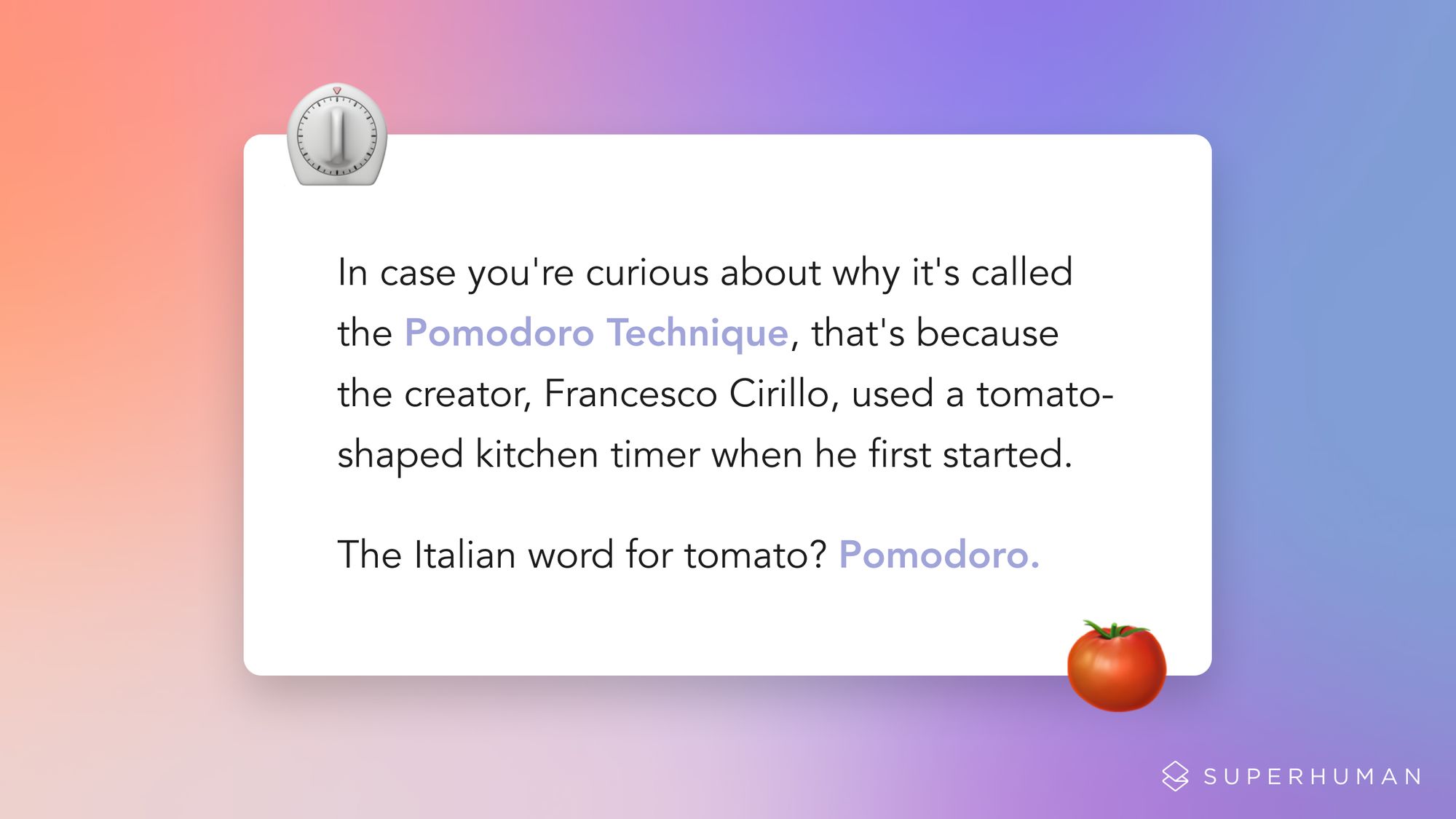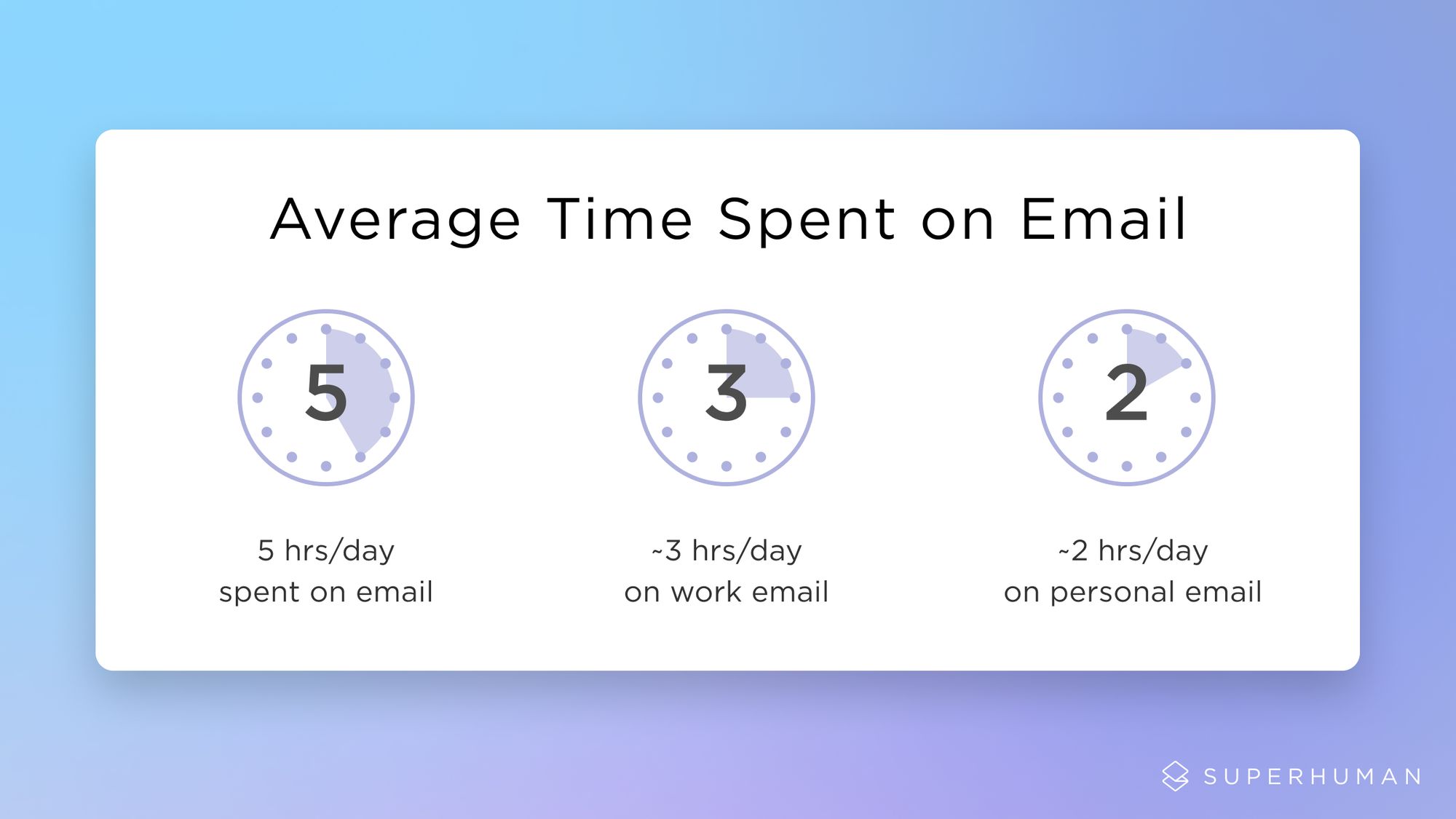
No productivity method has hit the mainstream quite like The Pomodoro® Technique — which promises to improve focus by breaking tasks into 25-minute slots.
There are hundreds of books about the "tomato technique". Dozens of apps to help you stick to this method. And so many planners designed to keep track of your Pomodoros!
As far as time management systems go, millions of people swear by the Pomodoro Technique. And when it comes to productivity, it's touted as one of the best ways to stay focused and keep track of your tasks.
But is the Pomodoro Technique really that effective? The easy answer is "maybe". The more complicated answer is "depends".
What is the Pomodoro Technique?
The concept is simple: you work in increments to cross off tasks from your to-do list. Each "Pomodoro" is a focused work session, sandwiched between short breaks. The method is intended to maintain your concentration, and help you avoid mental fatigue, so you can complete a project faster.
This is how the Pomodoro Technique works:
1. Work on a task for 25 minutes (this is one "Pomodoro").
2. Take a 5-minute break.
3. After 4 Pomodoros, take a 20- to 30-minute break.
4. Repeat until your task is complete (and cross that sucker off your list).

Why does the Pomodoro Technique work?
By breaking down a task and working on it in small increments of time, you can focus better and complete the task faster.
Why does it work so well? Because doing the same thing for a long time causes your performance to decline. Scientists call this "vigilance decrement", which occurs when your attention drops.
After a period of time, your brain has a tendency to tune out — that's why it stops recognizing constant stimuli, like how clothes feel on your skin. By dividing your work blocks with short breaks, you're rejuvenating your brain's focus on that particular task.
The Pomodoro Technique reduces distractions, increases your concentration, and helps with time management. It also makes progress easier to quantify: you can set goals for how many Pomodoros a task should take, and feel a sense of accomplishment as you tick them off.
How can the Pomodoro Technique work for you?
For starters, you'll need a timer. You can buy a traditional kitchen timer (even a tomato-shaped kitchen timer, like Cirillo's original!) or use an app to track your Pomodoros. There are plenty of web-based apps that are free and easy to use.
- Go straight to the source and use the app from the founder of the Pomodoro Technique.
- Marinara Timer lets you customize your timer by selecting how long it lasts (in hours, minutes, and seconds) as well as give each unique timer its own name — so you can save them for future work. The Marinara Timer also has the traditional Pomodoro system set up, so you don’t have to configure a timer.
- Pomodor App is a straightforward start-stop option. The app defaults to the Pomodoro settings (25 minutes of work and 5-minute breaks), but under the settings tab, you can customize your work and break durations.
The next thing to do is to plan your Pomodoros. What tasks do you want to accomplish for the day? How many Pomodoros (25-minute increments) do you estimate it will take to complete each task?
Keep track of how accurate or inaccurate your estimates were. You probably won't get it right at first, but as you improve, you'll get better and better at estimating the time you need. Ideally, you can either keep a digital log of your Pomodoro estimates, use a Pomodoro planner, or just send yourself a note in Slack or email.
Once you're comfortable with the method, you can play around with the length of your Pomodoros. If you find that your attention and focus could go a little longer than 25 minutes, try testing 30- or 40-minute increments until you find the one that's just right for you.
One of the important tenets of the Pomodoro Technique is to avoid screen time during your breaks. If you're working from home, you could alternate between "work" tasks and "home" tasks. Things like getting a snack or prepping for dinner, taking your dog for a walk or changing the cat's litter box, doing the laundry or washing the dishes.
What if the Pomodoro Technique isn't right for you?
Regardless of why, the Pomodoro Technique isn't for everyone.
Maybe you can't get your concentration back after your short break. Maybe your flow state needs to be uninterrupted for a longer period of time to complete a task. Or maybe your work requires you to be highly responsive, and you can't stay on schedule.
Before completely ruling out the method, consider tweaking it to suit your needs.
- Alter the length of your Pomodoros. Instead of increments of 25-minute work followed by 5-minute breaks, change your timers to have longer or shorter Pomodoros and/or breaks, as suggested in the Flowtime Technique.
- Experiment with different types of work. Maybe the Pomodoro Technique isn't right for writing or graphic design projects, but is right for data analysis or accounting tasks.
- Choose different days of the week. It could also be that you have ongoing commitments or standing meetings on some days that cut into your Pomodoro productivity. Try using it on a Friday, or whenever your work typically experiences a lull — so you can choose your own rhythm to concentrate better.
Are there any other productivity techniques I should try?
Whether or not the Pomodoro Technique is right for you, there are other productivity techniques you can try.
One of the most overlooked productivity techniques is effectively managing your email.
In 2019, Adobe conducted an email usage study that found that Americans spend an average of 5 hours per day checking email: 3-plus hours for work email and 2-plus hours for personal email. And the era of working from home has only pulled us deeper into the email responsiveness cycle.

Many of us keep our email running in the background at all times, with alerts for when new messages come in. But that reduces your productivity by distracting you from your current task.
Using Superhuman helps you remove distractions and renew your focus. The interface is fast, the command palette places all actions at your fingertips, and you can move seamlessly between tasks — so you don't have to think of which action to take next.
Get started with SuperhumanHeighten your productivity
Everyone can use an assist when it comes to productivity, and testing different methods like the Pomodoro Technique is a great way to find what works (or doesn't) for you.
Beyond leveraging the Pomodoro Technique to improve your focus, consider each of your workflows in turn. For email, Superhuman can help you regain focus and save time — get started here.


